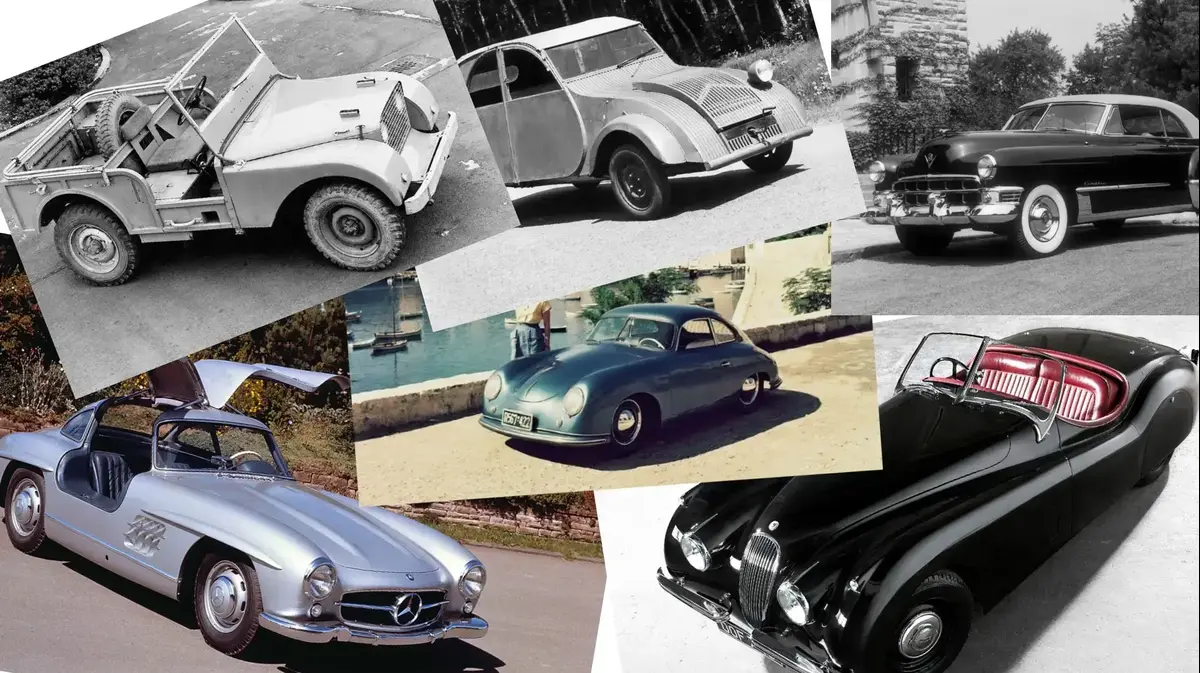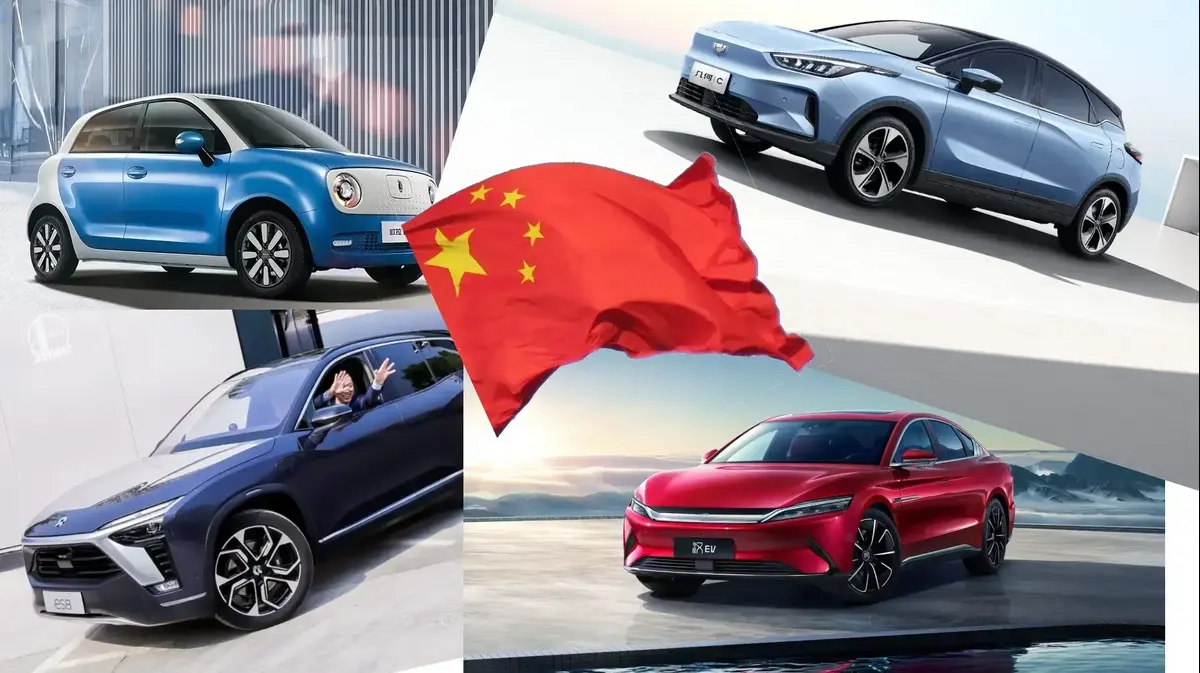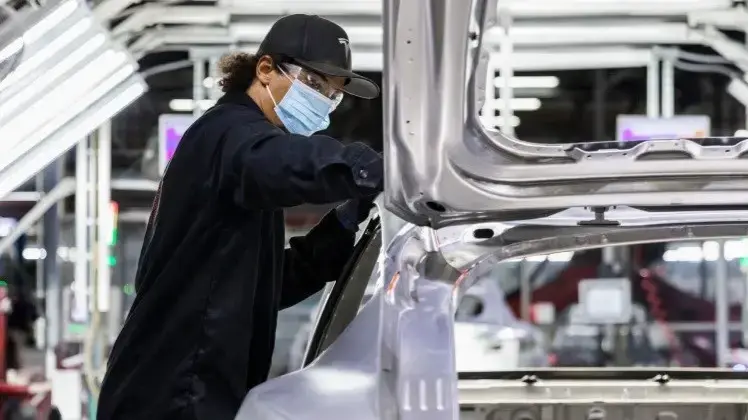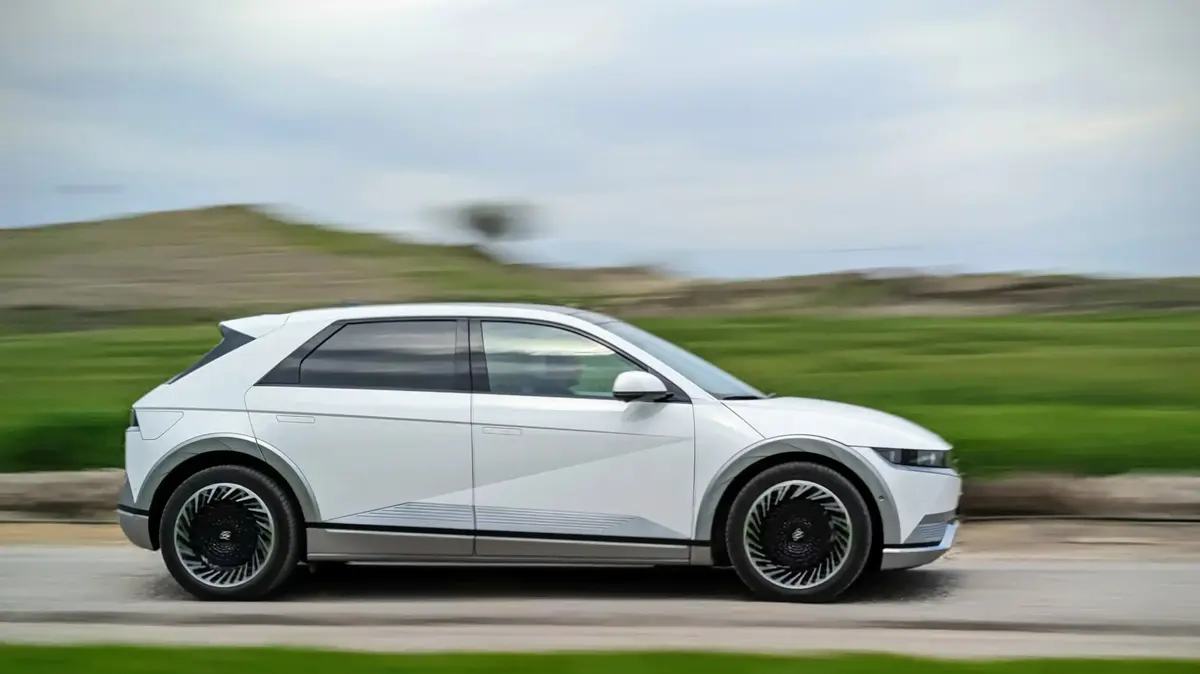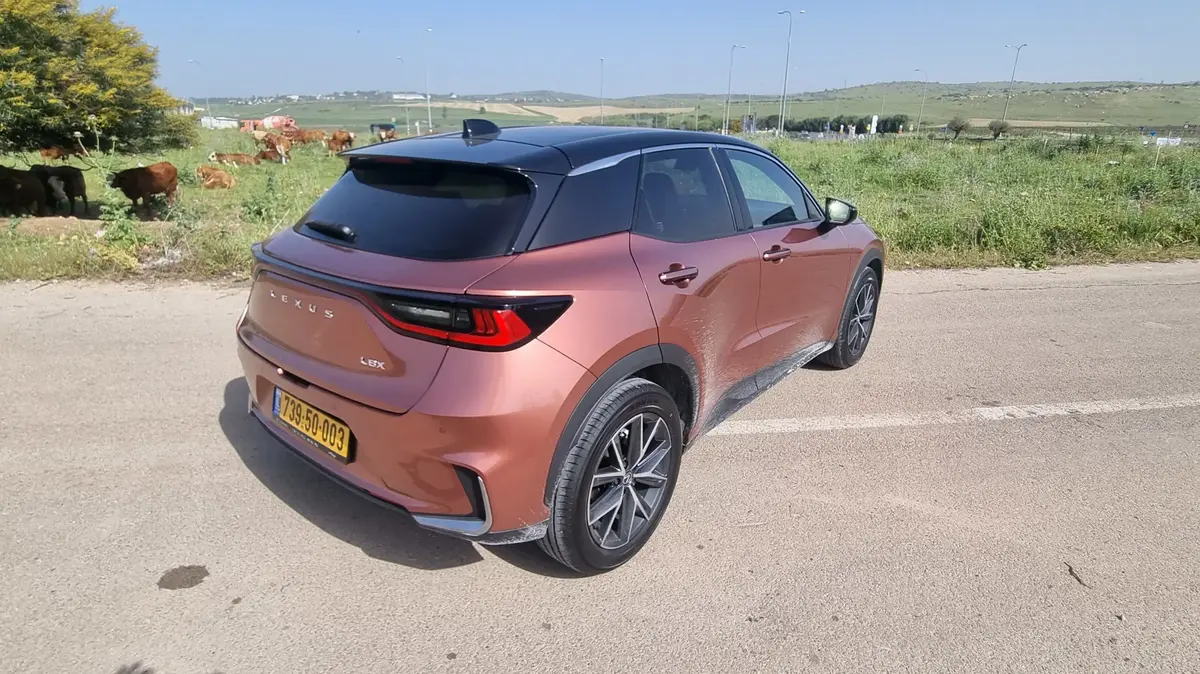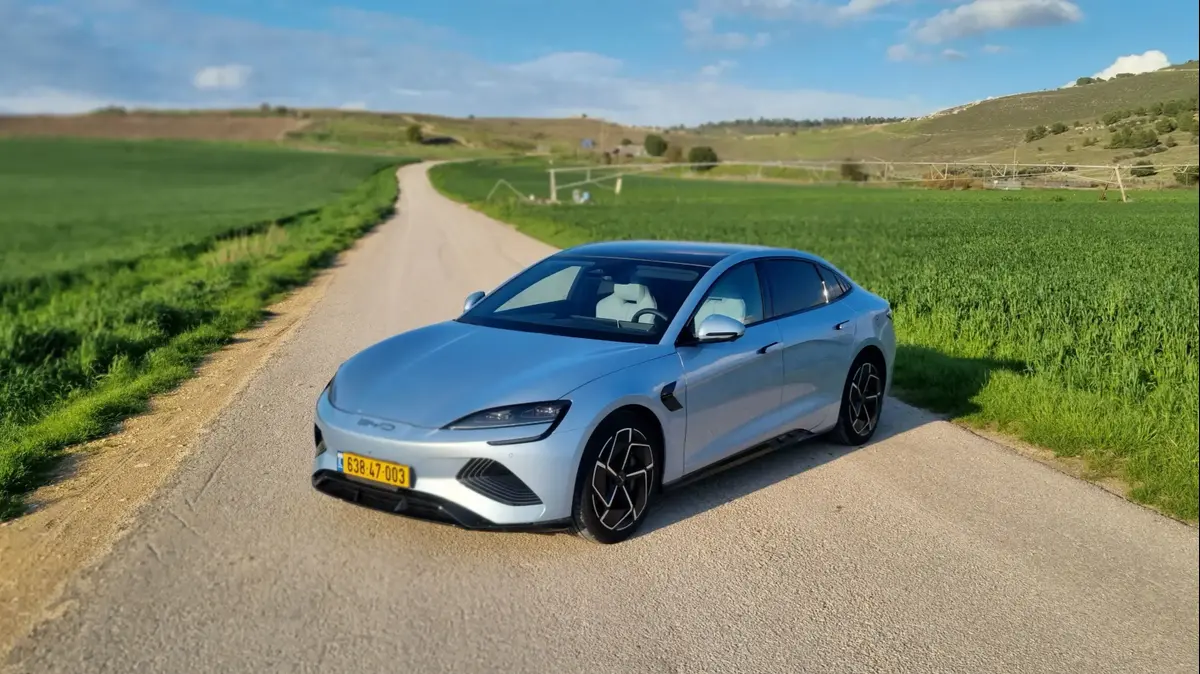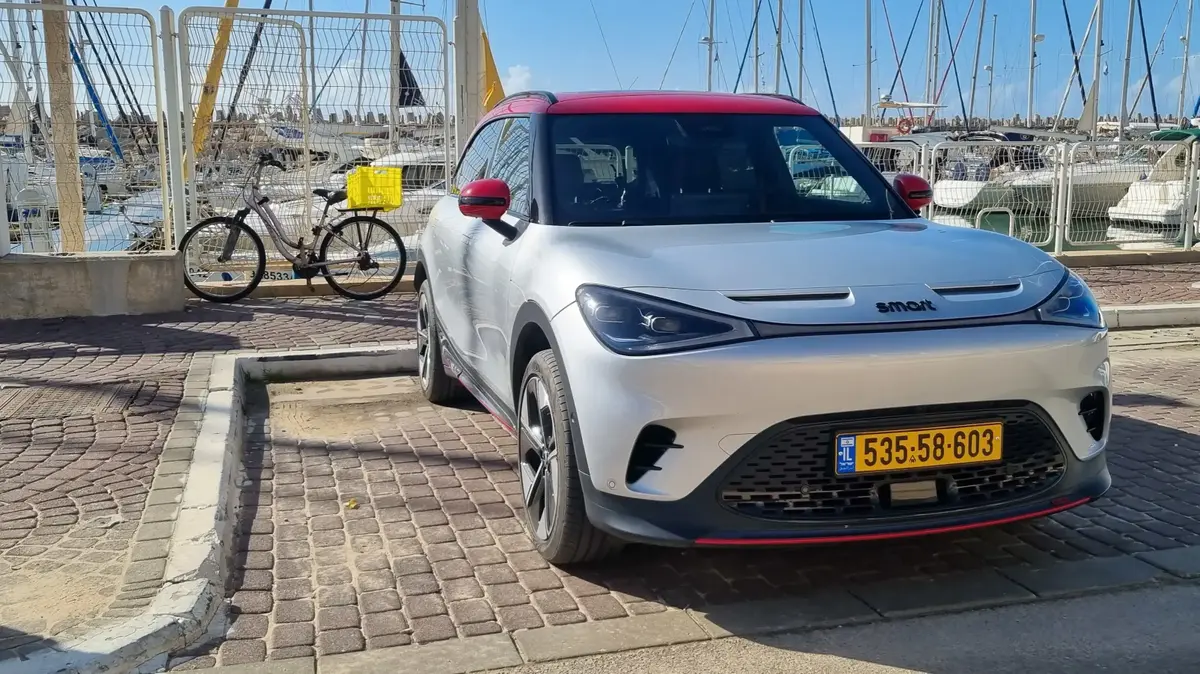The Cars That Changed The World - Part 2
It was a time of contrasts, of small, practical and simple cars for the bruised economies and a time of great prosperity for those who were not harmed by the war.
In Chapter B we dive into the period of the great contrasts of the automotive industry
Keenan Cohen
21/01/2022
Friday, 21 January 2022, 09:30 Updated: 09:56
Share on Facebook
Share on WhatsApp
Share on Twitter
Share on Email
Share on general
Comments
Comments
The story of the cars that changed the world is much more than a grocery list of important, many and good cars that do not appear here due to lack of space, but are totally worth mentioning.
It is also the story of the world as it was shaped and changed through the car windshield and its rearview mirror.
In terms of the automotive industry, World War II was a watershed that determined how the automotive industries continued to develop in different corners of the world.
It was not a game of winners and losers, it was a game of winners and losers.
Europe's economies were shattered without exception, that of Germany distinctly, but each of the other countries looked at the ruins left by the war at home who more and who less and mostly began the work of rebuilding and rehabilitating the economy.
More on Walla!
The cars that changed the world - Part 1
To the full article
Skoda 1102 Tudor, kept the embers of innovation even under Soviet occupation (Photo: Manufacturer's website)
Not only Western Europe, but also Eastern Europe under the Soviet Union suffered double destruction, also torn from the war years and what the Germans did not destroy was trampled by the Soviets when a lead-full brain ran it with an iron fist of political functionaries.
Luxurious carmakers like Skoda and Tatra have been doomed to years of shuffling (and yet have kept an embers of engineering genius, wow, their story deserves an article in its own right), not to mention the manufacturers in Russia itself.
Japan has been in a very poor economic and moral state, turning its industrial efforts inward to rebuilding the country as industrial-modern and less traditional-historical.
A large part of the seeds for who she will become in the future third episode of this series - were sown here.
After the war, the Americans were at the best industrial starting point (Photo: Manufacturer's website)
And there was also the United States, oh, the United States of America, where the business was completely different.
And not that it was not economically damaged by the war, but leaving the horrors, horrors and sights of the war somewhere across the oceans, the fact that during the war only 7 attacks were carried out in the territory of the United States and killed six American civilians, the fact that during the war it included its production capabilities. Even the American ethos of a blessed nation that can achieve anything - these and others influenced who would become the most glorious automotive industry in the post-war years.
After in Part A of this series we looked at the first in their field, the revolutionaries and the different.
In the second part we already meet cars that are starting to remind us of our motor world as it looks today.
Jaguar XK120, did not look or drive like anything in its time (Photo: Manufacturer's website)
1948 - Jaguar XK120
It was a car that came out of nowhere. In Britain, which still lives under rationing, a new-old manufacturer called Jaguar (which also existed before the war under the name SS, Zero, a not-quite-popular letter combination after it) is recovering from the war, introducing the XK120. A car in limited production that even started as a marketing exercise to introduce the 3.4-liter six-cylinder engine in a column with a double camshaft of the company.
She's here because she was no longer the fastest sports car in the world with almost no sports cars, she was the fastest car. Which reached a speed from which its name was derived 120 miles per hour (193 km / h), and just to understand the sensation in that number - the familialities of its time like Maurice Minor or Hillman Minx struggled to record a top speed of 100 and a bit of km / h.
The highs she set and remained years after her departure, the races she won and the fact that she is one of the few cars that still make car lovers around the world spin from her are the icing on this glorious cake.
Halfway between a tractor and an SUV (Photo: Manufacturer's website)
1948 - Land Rover
Yes, 1948 was a good year for the British - they just left Palestine and the blessings began to fall on them.
Because in the same year that the XK120 was introduced, in fact not far from it at the same London Motor Show there was a strange-looking production called the Land Rover.
This is, without a model, there were no models then was just the name of the manufacturer.
He was not the first SUV, but he was the first to allow a farmer to give a field job in the morning and jump with the produce to market at noon.
It was rough, noisy, slow and horribly simple - but hey, the alternative was a tractor or a horse and cart.
Over the years, it has become one of the symbols of the empire, reaching every corner of the world (Photo: Manufacturer's website)
Speaking of a tractor, in the first model the steering wheel and seat were in the center of the vehicle to make it easier for the farmer to see what was going on on the sides.
It was made of aluminum, the material from which planes were built and was abundant from it, it was built from as straight plates as possible to facilitate and reduce its construction.
In the reverse route from the jeep that started in uniform and went out for citizenship, the Land Rover did the opposite route and later became a utility in armies around the world.
Cadillac Series 62 The Beginning of Cadillac's Golden Age (Photo: Manufacturer's Website)
1948 - Cadillac Series 62
The return of American car manufacturers to work was not immediate either, the model years of '46 and '47 were mainly improvements of pre-war models, even the new ones suffered from the shortage of raw materials.
But then came the Cadillac's 62 Series in 1948 and more than any other car, it produced what became the greatest American luxury brand of all time.
Ford tried with Lincoln, Chrysler with Imperial - neither of them bought itself the Cadillac name and status.
The fin wings will swell to enormous proportions in the next decade (Photo: Manufacturer's website)
And there was one more thing that put her on this list - she was the first to walk around with the tail fins, the ones that would accompany and define not only the Cadillac but any larger-than-life American car for the next 15 years.
Their source was, say, the double-tail of Lockheed's P-38 Lightning aircraft from World War II.
But no matter what the reason, the result was that anyone who wanted to radiate something from the spirit of American abundance there to his car like this, from Ford England, Peugeot 404 to Mercedes with the W110, W111 and W112.
And it is these tail fins that will become the American symbol and continue to grow throughout the 1950s and early 1960s so the 62 Series came off the production lines a few generations later.
One of the prototypes of the Da in which, one flashlight was the minimum required by law (Photo: Manufacturer's website)
1948 - Citroen de Sabo
Yes, we are still in 1948 and the reason this is one of the most important years in the car industry will come back in each of these cars - this was the first year the car industry started to recover.
In the Citroen it was done with the Dao, which was one of the oldest new models around.
Its story begins more than a decade earlier, when then-Citroen vice-president Pierre Bollanger (some of you may remember from the Nazi truck sabotage story) sends a memo to the engineering team that signed the Avent traction detailing a list of requirements for a small, offensive, cheap and very economical car.
The reason?
The Michelin company that took over Citroen bankrupt two years earlier has identified an unrealized market share among agricultural populations in rural France - vehicles with these characteristics are exactly what they need.
More on Walla!
The Jewish racing driver who humiliated the Nazi party
To the full article
A year later, prototypes of this most basic car have been circulating, how basic?
At first it had only one flashlight - the minimum required by law in France.
The car showcased exceptional capabilities for its time.
We will not go into detail about all of them, but say that the corrugated structure of the panels in the first models was not aesthetic, but was intended to give structural strength to its thin aluminum panels.
Technically, until 1955 it had no roof, only this fabric cover designed to save money, materials and allow high loads to be carried.
The radial tires you all have in cars today?
Were developed especially for her.
You can read about other things here.
More than a decade after the development began, it was introduced and became a legend (Photo: Manufacturer's website)
In 1937 Pierre Michelin was killed in a car accident and Bollanger became president of Citroen and the pace of development of the car accelerated. In 1939 the car was ready and a first series of 250 units of the revolutionary car was produced. On August 28, the car receives marketing approval in France, print leaflets are printed, and final preparations for the car show at the Paris show are made. Then on September 3, France also enters World War II and while the Germans are making quiche Lorraine from the French army - Bollanger and the company's management decide to hide the car in order to prevent the Nazis from getting their hands on the design and making it the Beetle 2. The
war ends, France finds itself in a similar place To the one where it had been a decade earlier, broken, dismantled with a tremendous need for populations in transportation across broken roads and dilapidated roads - guess who did it excellently?
On September 7, 1948 - nine years after its original performance date, the re-enactment takes place on stage at the Paris Exhibition. It will remain a revolutionary legend even throughout its 42 years of production.
Porsche 356, more than a beetle in disguise (Photo: manufacturer's website)
1949 - Porsche 356
I had a difficult time deciding whether to include the 356 here.
Because at least on the face of it there was nothing innovative in this car.
There was nothing innovative and there was nothing that changed the industry in it.
There was nothing new in it because the Beetle and cars with a design similar to it had already put an air-cooled boxer engine in the rear.
She did not make a change because except for the Porsche and a few other models this story of the engine in the back did not really catch on.
Its design, which is reminiscent of a beetle that someone left in the oven for too long, comes from the table of the same designer - Erwin Komanda.
The engine and quite a few components came from Volkswagen, at least at the beginning of the car's journey.
The humble beginning paved the way for a glorious dynasty (Photo: Manufacturer's website)
So why is she here?
Mostly because of the wind.
This car was the opening shot of Perry Porsche (the son of) in what would become a journey of brilliant engineering tackle, with a conception that was by no means supposed to succeed.
The 356 is here because it was the beginning of a journey that spawned brilliant cars not through revolutions, but through continuous improvement that stems from the perception that loving cars and loving driving is loving the challenge in them, on the drawing board and behind the wheel.
And as Perry Porsche put it: "I could not find the sports car I dreamed of - so I built one."
The first super car (Photo: manufacturer's website)
1954 - Mercedes 300SL
A lot of people will argue about this statement, but I'm willing to fiercely defend it - the Mercedes 300SL is the first supercar.
With all due respect to the Lamborghini Miura, this car was there before and had everything it took to be a real super car.
Let’s start with the story behind it was just taking a race car and turning it into something legal for the road.
In this case the W194 that Mercedes' largest distributor in the United States, Max Hoffman, persuaded management to build and allow him to sell them to the generation getting rich in the 1950s in the United States.
The success was dizzying, in fact it was Mercedes' first major commercial success in the United States.
One of the prototypes next to the W194, a race car for the public road (Photo: manufacturer's website)
But also beyond that.
It was a car because you would see it, with that crazy hood, underneath it a six-cylinder six-cylinder engine with a Bosch mechanical fuel injection that came to it from the Messerschmitt 109 and that was in 1954 (!) Decades before fuel injection came to regular cars.
Dry oil sump allowed the engine to continue to get lubricated even in long turns at very high speeds and allowed it to sit even lower in the chassis.
The power was 240 hp and the top speed ranged from 225 km / h to 263 km / h depending on the final transmission ratio in the gearbox.
The steering wheel had to be folded to enter (Photo: manufacturer's website)
She was a car on because it was an absolute nightmare to drive it and I know it firsthand from a bastard colleague who actually drove one.
The steering wheel had to be folded to get in and out of it.
The unusually high door sills (due to the tube chassis structure - like that of a race car) make entering and exiting it look like a combination of a courtship of cranes dancing and a karate exercise that got out of hand.
And she had seagull doors - like - seagull doors!
Obviously this is a super car.
And it also came in open versions, but less desirable (Photo: Manufacturer's website)
It was a car because there was no more car before it and very little after it that you could take out of the showroom, make a few small changes, leap into one of the toughest road races ever - the Millia Mileage (1,000 miles) and finish in fifth place.
It was a car because it was the first time people looked at a machine that presented such a high standard that the automotive industry had no choice but to strive to pass it for the sake of achievement.
Saab 92, a car as only an aircraft manufacturer can build (Photo: manufacturer's website)
There were other important cars in those years, a Ferrari that was also established in 1948 rolled the first car of a year later, but it was not completely built by it.
The 1949 Ford Custom was the first American folk car to be redesigned after the war.
The MG TD was technically introduced, and became a legend of popular sports cars, but was not really innovative or important and advanced.
The Saab 92, the first to show the world the engineering genius of the Swedish aircraft manufacturer and show that with the right design, even a small car with 25 horses can win rally races.
And even the first Corvette was introduced in 1953 and in the next article I will also explain why it is not here.
vehicle
Car News
Tags
jaguar
Porsche
Cadillac
Mercedes
land Rover
Citroen

